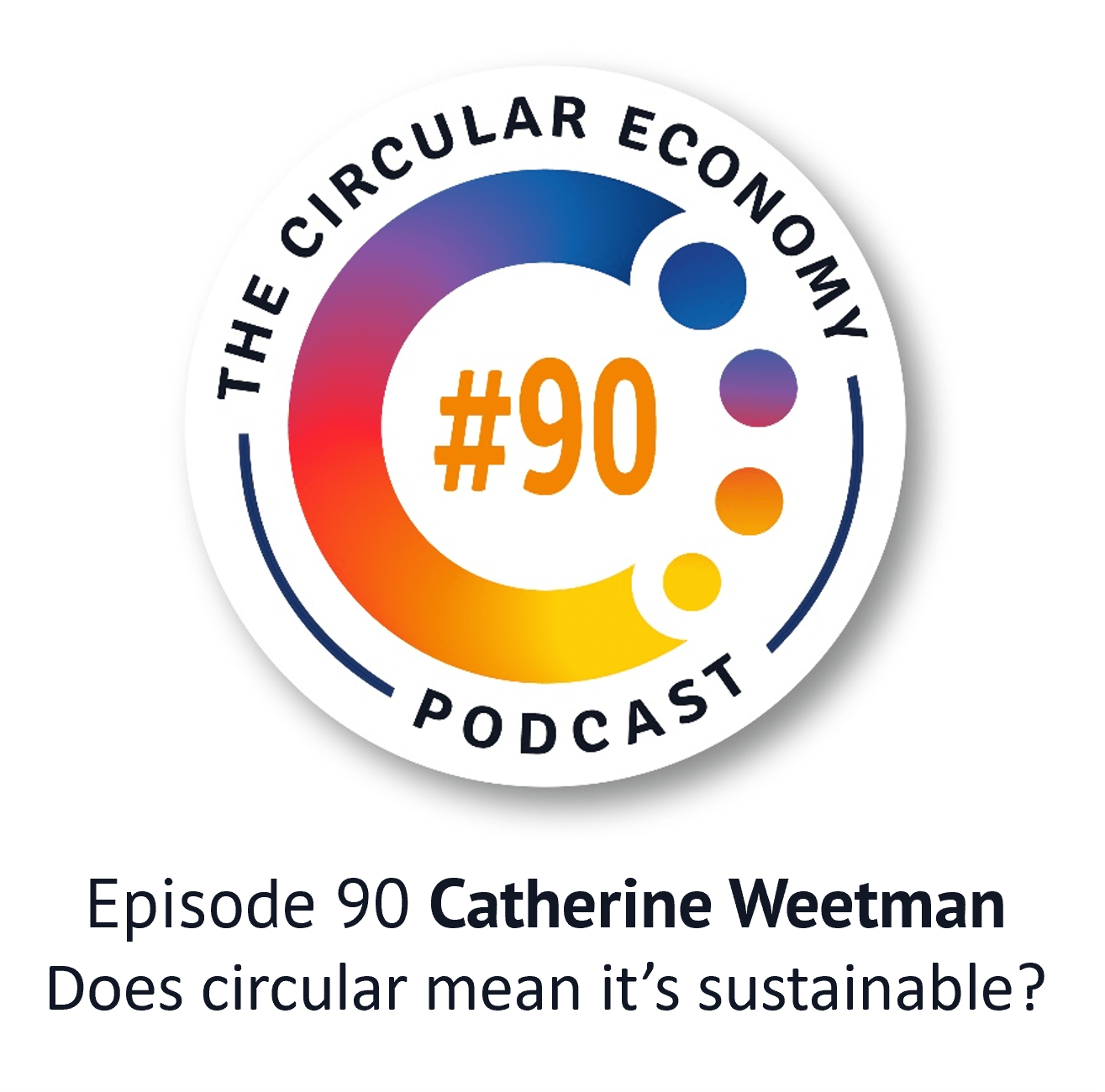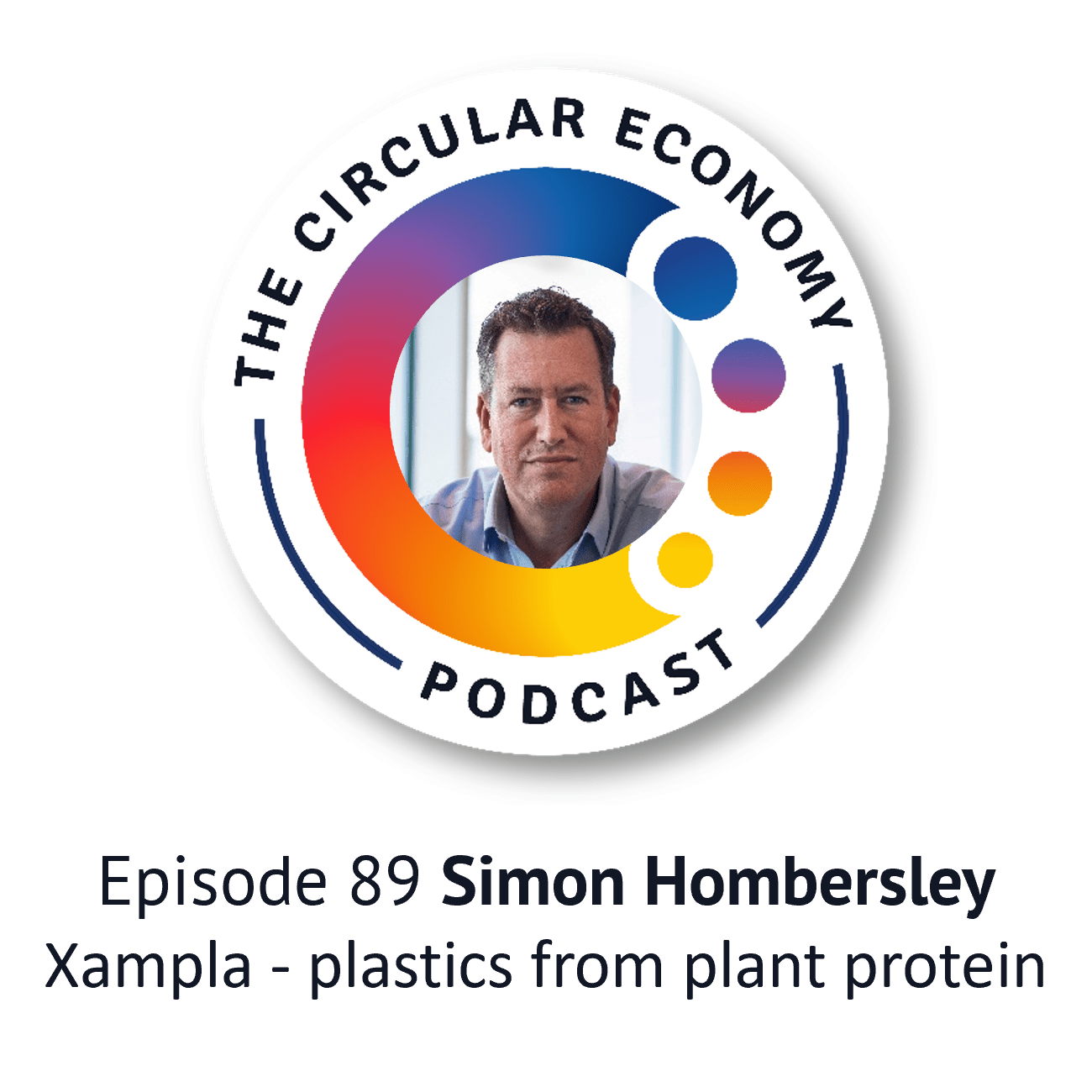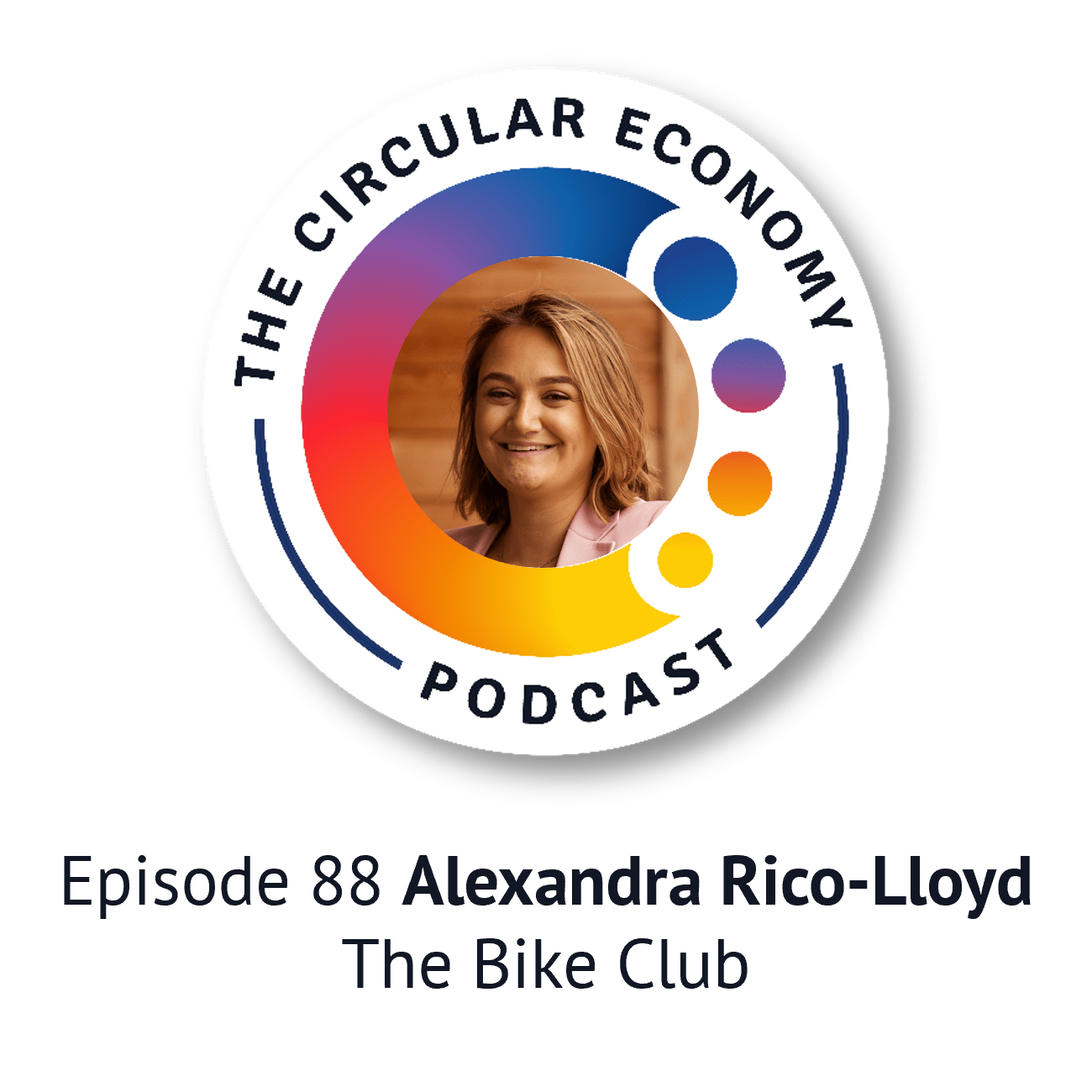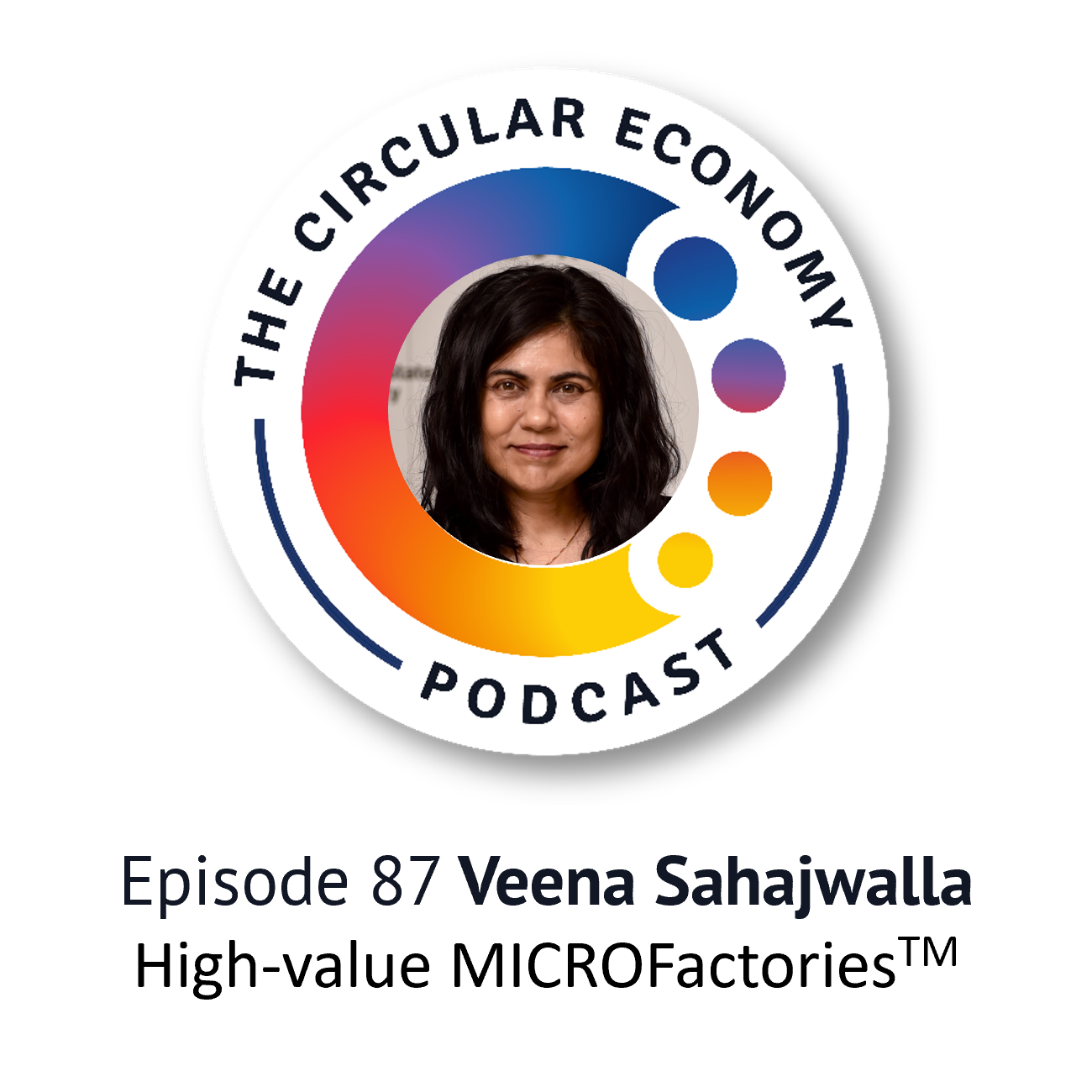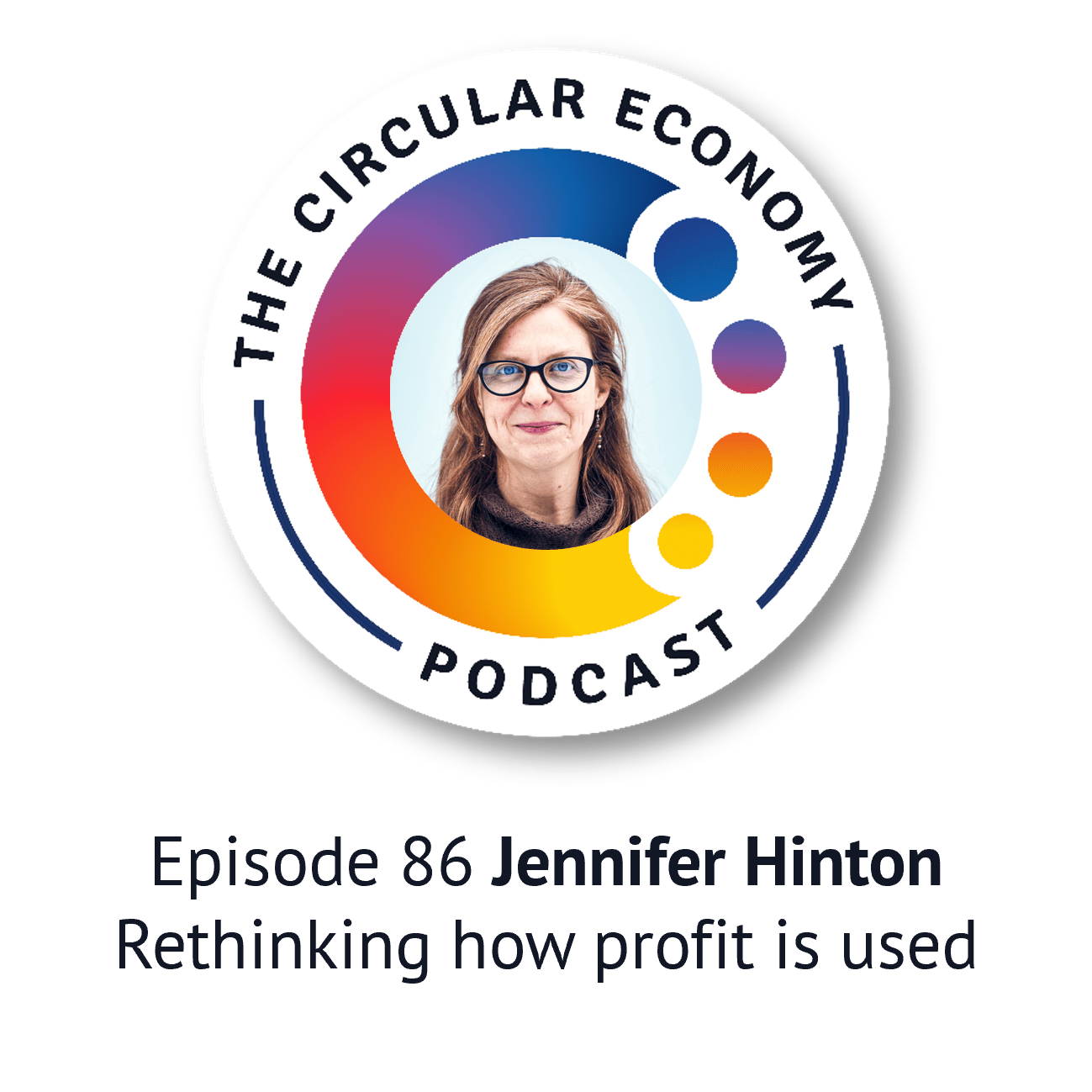Podcast: Play in new window | Download
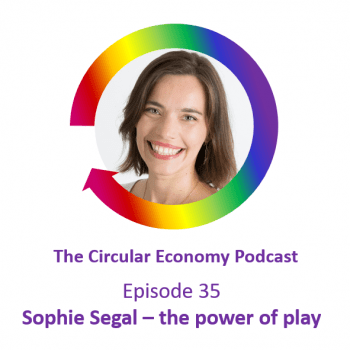 In this episode, we meet Sophie Segal, who will be working with Peter Desmond and me on our new coaching programme. We’re just finalising the last few tools for that, look out for more info on RethinkGlobal.info soon!
In this episode, we meet Sophie Segal, who will be working with Peter Desmond and me on our new coaching programme. We’re just finalising the last few tools for that, look out for more info on RethinkGlobal.info soon!
In this episode, we meet Sophie Segal, who wears a few ‘hats’, including with Co-CREATE ImpACT – providing innovative social impact training, and Together Dragonflies – using value creation and innovation to shape new customer experiences.
She helps organisations with their purpose, to design value propositions and customer experiences that resonate. She is also bringing people together in her community to amplify local circular initiatives.
Sophie uses games to engage people in sustainability, and helps organisations with their purpose. I was curious to know more about why organisations are working on sustainability, and a purpose beyond profit. We talked about what Sophie sees as the forces for change, and the barriers (for both business and citizens).
Sophie will be working with Peter Desmond and Catherine Weetman on our new coaching programme. We’re just finalising the last few tools for that, look out for more info on RethinkGlobal.info soon!
Podcast host Catherine Weetman is a circular economy business advisor, workshop facilitator, speaker and writer. Her award-winning book, includes lots of practical examples and tips on getting started. Catherine founded Rethink Global in 2013, to help businesses use circular, sustainable approaches to build a better business (and a better world).
Stay in touch for free insights and updates…
Read on for a summary of the podcast and links to the people, organisations and other resources we mention.
You can subscribe to the podcast series on iTunes, Google Podcasts, PlayerFM, Spotify, TuneIn, or search for “circular economy” in your favourite podcast app. Stay in touch to get free insights and updates, direct to your inbox…
Links we mention in the episode:
- Co-CREATE ImpACT – Innovative social impact training
- Together Dragonflies – Using value creation and innovation to shape new customer experiences
- The best place to find Sophie is on Linkedin
- Circular Economy Club circulareconomyclub.com
- Circular Economy Club Reading Chapter https://www.linkedin.com/groups/12363814/
- Eco Brixs and Andy Bownds – listen to podcast episode 23 – Andy Bownds of EcoBrixs: creating social value by recycling waste plastic into construction materials https://www.rethinkglobal.info/episode-23-andy-bownds-eco-brixs/
- Katie Briggs of the Textile Review – listen to podcast episode 26 https://www.rethinkglobal.info/episode-26-katie-briggs-of-the-textile-review/
- Christian van Maaren of Excess Materials Exchange – listen to podcast episode 32 https://www.rethinkglobal.info/episode-32-christian-van-maaren-of-excess-materials-exchange/
- Feedback Global – listen to podcast episode 9: Lucy Antal – transforming our food systems https://www.rethinkglobal.info/episode-9-lucy-antal-transforming-our-food-systems/
- iFixit ifixit.com
- Patagonia patagonia.com
- Toast Ale https://www.toastale.com/
About Sophie Segal
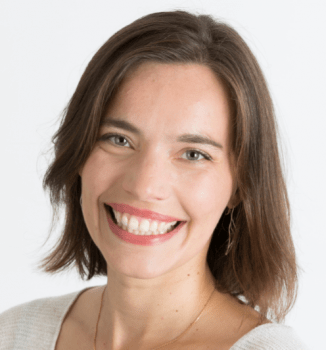 A former Head of Loyalty for a large international business, Sophie is passionate about people first and human-centred organisations and the idea to rethink business models and engagement for the good of tomorrow.
A former Head of Loyalty for a large international business, Sophie is passionate about people first and human-centred organisations and the idea to rethink business models and engagement for the good of tomorrow.
Sophie works with founders, scale-ups and established organisations to design customer propositions and customer experiences that resonate and make them proud. She helps create inspiring and action-orientated sales and marketing roadmaps that place employees and customers at their heart, to drive customer loyalty, improve customer experiences and transform their business.
Sophie volunteers for the Circular Economy Club, as the organiser for the Reading chapter in the UK.
Sophie holds an MA in International Business and Management. She is a founder, consultant, mentor, facilitator and speaker.
Co-CREATE ImpACT – Innovative social impact training
Together Dragonflies – Using value creation and innovation to shape new customer experiences
Catherine Weetman 00:27
Today we’re talking to Sophie Segal. I first met Sophie last year after she asked me about how to set up a local group for the Circular Economy Club. Sophie went on to found the Reading chapter of the Circular Economy Club in the south of England, and we stayed in touch. I was fascinated by the way Sophie uses games to engage people in sustainability and encouraged us to think differently, to think about the system that we’re all part of. Sophie wears a few hats, including with Cocreate Impact, providing innovative social impact training, and Together Dragonflies, using value creation and innovation to shape new customer experiences. She helps organizations with their purpose to design value propositions and customer experiences that resonate. She’s also bringing people together in her community to amplify local circular economy initiatives. Sophie says she’s curious by nature and loves the idea for rethinking existing business models and engagement for the good of tomorrow. Sophie uses value creation, innovation and different approaches to shift mindsets. And her latest ventures, she uses the transformative power of play with organizations to bring to life customer focus and engage employees in sustainability and the circular economy. Sophie, welcome to the Circular Economy Podcast
Sophie Segal 01:54
Thank you for having me on this today.
Catherine Weetman 01:56
So it’s great to almost be here together virtually, in our no doubt hot rooms, in the hottest May on record.
Catherine Weetman 02:06
And then going back to when the two of us met up last year at the RSA with my colleague, Peter Desmond, we discovered a surprising connection. Your first introduction to the circular economy was through someone I’ve interviewed for the podcast.
Sophie Segal 02:21
Yes, it is. And it’s, it’s quite an unusual one in the sense where I actually went to Uganda to run the marathon. And what happened is like prior to that a few months before I actually met a colleague, we were discussing about collaboration. And he briefly mentioned that he wanted to move away from I was doing to work more with circular economy companies, and I just I was wondering what that was! I had to ask him, and then he said, You know, I was like, Ooh, that’s quite an interesting concept. And that’s when I started looking into it a little bit more. And then by chance a few months later, so I went to the Uganda Marathon and didn’t just run the Marathon but helped the local community projects. And this is where met Andy Bounds from EcoBrixs. And what happened there is that within literally a couple of hours, I’ve seen a change happening in front of my eyes. So we went into a really very small village to build one of the EcoBrixs wooden huts collection points, basically. And as some people were doing that I just walked down the street giving out leaflets to the local people explaining that they were collecting plastic, they prepared some money and so and at that time, I had like lots of kids running after me and just, you know, been curious about a piece of paper. And I sat down and told them exactly the same story. And then they run away just like nodding their heads and just went on. And then I had a massive goose bump moment, but I just turned around and I saw this kid had gone home and came back with massive bags and we’re basically clear up the entire street of plastic.
Catherine Weetman 03:55
Wow
Sophie Segal 03:55
Within two hours we literally had like, a pile of plastic, that was as tall as me, that all those kids had brought back, we ran out of money and all of that. And that moment was really like that – wow – that is actually circular economy in itself. And the reason why I mentioned the story is because it totally shifted, you know, the way that I’m doing business now, shifting from what I was doing, with customer value proposition and so on, but working more with companies in the circular economy. It also brought to life a concept, there was quite theoretical up until that point of time, and then I’ve seen it, and also realised that in right environments, a lot can change. And the change can be really, really fast. And there was that point where I was like, actually, there’s something really strong in circular economy. I want to do more, I want to help the transition. And then I shifted my work towards that, and started, like, I got introduced to you! And I actually started running the Circular Economy Club in Reading. I took on different courses to learn so much more and move on with the customer experience, and so it’s quite an unusual journey. But I quite like saying it because it shows that the shift can happen at any time to anyone.
Catherine Weetman 05:08
Yeah, it’s a fantastic story. And I think what’s what’s brilliant about eco bricks and some of the other examples we’ve heard about on the podcast is they go beyond circular because they’re creating transformation in communities and using the power of the circular economy, to create value for social groups, underprivileged groups, or just, you know, people who don’t have access to the kind of infrastructure that we take for granted sometimes in developed economies. So it’s brilliant. And I’m curious to know more about why organizations are working on sustainability and building a purpose beyond profit. What do you see as the forces for change? And the barriers?
Sophie Segal 05:52
I think it’s, yeah, it’s a very interesting question in itself and my background has got nothing to do with sustainability in itself. I come from a commercial background. So like growth and looking at market opportunities and so on is really what I was doing. And up until that moment that had sustainability was very much like a green initiatives or CSR or, you know, ticking the boxes exercises. And they still think that in many cases is how it is perceived. I’m not saying this is what it is, but it’s how it is perceived by many people who are in organizations. And this is when I think like the circular economy, it just makes business sense. And in that case, because it makes business sense, it can push on growth, basically, as well as protecting the planet and bringing the people together. I think this is for me, where sustainability becomes more, like even more meaningful, and you can engage more people around that. So in terms of some of the forces, yes is the meaning and that there is for me coming from a commercial background is that it boosts the boosted literally all the commercial metrics, because it looks at you know, the retention as well. With loyalty, it looks at how you can create new contents to engage customers to drive innovation. So it really, really makes a lot of business sense. And I think a lot of companies that want to stay ahead, and think differently, reinvent some of the models that are in there and the pressure, I think all of those are really major, major forces. Now, when we talk about sustainability with companies through Co-CREATE ImpACT, we see that the “why”, why we need sustainability, what we need to focus on that is not the discussion anymore. The discussion is on, the “how”, how do we make happen? How do we make it relevant to our employees and to the wider community, our partners in the supply chain and so on, as well as our employees? So I think this is one of those and when we look at the forces from a pure commercial background, it’s a no-brainer. You know, I cannot imagine any commercial person saying, I don’t need the opportunity to do that. So I think that’s really one of the forces that is happening. And COVID has actually shown a lot of work and done things in our system and the way the organizations are working. So that’s I think those are really the main forces for me.
Sophie Segal 08:13
And then you’ve asked about some of the barriers. And I was thinking about this one the other day, and I think I probably would like two – I would say one or two, and so the first one is around the barrier of knowledge. And that’s something I see a lot in consumer communication as well. two aspects, one, the commercial people and the people within the organization are not yet enough aware about what’s your Circular Economy means for example, and how they can help them achieve more sustainable business models. So there’s quite a fair bit of things to be done there just to broaden them to make everyone aware about that. So it’s a lack of knowledge and within the organization. And the second one is almost the opposite. It’s like when you’re into it, the challenge its that it sounds so obvious and that’s maybe we explained it in a too high a level or too much in depth and so on and we lose our customers into that. So it’s really trying to break down our knowledge and go back to the most basic level so that we can take people along a journey – it’s making it an easy journey for everyone.
Catherine Weetman 09:23
So sorry, just make sure I heard that properly. For the second barrier, it’s that you think it sounds too complicated.
Sophie Segal 09:31
Yeah, yeah. For some people, engaging and for consumers as well, I think it is, you know, if it you talk ‘circular,’ what this means to them, it doesn’t mean anything. We need to break down so to break down that knowledge so we can go back to it.
Catherine Weetman 09:47
Yeah, I completely agree. And I think if we could get circular into, you know, general conversation, which the BBC certainly is, is starting to do, you know, it’s cropping up more, as a phrase in discussions about sustainable products and things like that people are starting to hear it a little bit more. But I guess, for us, it’s probably different because it’s on our radar. So we notice it, whereas many people, you know, probably don’t, does that thing isn’t about, you only remember, at most 10% of what you hear and see him, and so on. And so, in terms of the typical insights from the customer experience, and the SDGs game that you use, from both a business perspective, and from a citizen perspective, what kind of things strike people that are, you know, either good observations or bad observations about how we live and work now, what do people take away from it?
Sophie Segal 10:49
I mean, just maybe, again, back to the barriers, just to tell people where those games do through Co-create Impact, what we do is we use play to engage in sustainability and the circular economy, and again, there is a little bit of story that it always starts with a story. And that’s another point for communication that we can cover later. But when I was in a commercial world, I was trying to engage my customers in a different way. And I realised that gamification was something that was working quite well. In the meantime, I had kids and I realised that actually, their entire learning process is through play. This is where they learn and it quite strikes me that somehow, in other tools we’ll lose that because it’s not serious enough or whatever that is. But what the power of play has, is that for very complex topics that we want to engage people on, we actually really break down and remove all of those barriers. So with that, and that the presentation isn’t factual, you actually get people to do something, you get them to remove it, they get freedom, basically, there is no constraint that can do anything, all the solutions are possible and so on. So this is really the framework and the reason why we’re using game and play-based learning to engage people in sustainability. And then what we see is that there are two different angles from the businesses, it helps with the ‘how’ as was mentioned earlier, they want to find new ideas, new tools, new ways to engage their customers, their employees, the employees, the employees on something that’s been interested in before. So there is a really powerful aspect on that side. And you also that’s where I bring some of my customer experience, design tactics there, it breaks the script. If you want to engage employees in something you would expect to the presentation, it quickly breaks and it gets them to where we call ‘trip over the truth.’ So instead of telling them, we let them play, and we let them do it and be like my ‘aha’ moment, I was looking in the beginning we actually orchestrate those moments. So some of the insight you really get, from the especially from the employees, it is a fact that they realise that they can play a role and the ownership is with them, and starts with them. That’s partly where it breaks the script. It’s just fascinating to see. And the second part is how everything is really much interlinked. And this one we see a lot in the in the SDG game where in the beginning everyone has a goal, they need to cheat the person who wants as well as reaching the three pillars of sustainability. So the economy, the people and the planets, and you can see halfway through, everyone’s doing really well on their personal objective, but then the rest are not really following balance or in balance. And then once they start having the realisation moment, as I have, actually we need to work in collaboration, we need to work together better, we need to communicate better, I need to achieve my goal, but is that more important than the overall one and we can really see a shift, and people are like ‘ha’ – now I can do something, I can take action. And that’s really, really the key insights that people come out of feeling they are empowered to do something or the organization but also in their personal life. And that’s the ripple effects that we really like.
Catherine Weetman 14:09
There’s lots of research isn’t there on how being able to do things more creatively can spark better ideas and lead to more innovation as in a wealth of ideas as well as more adventurous.
Sophie Segal 14:29
It helps organization with the, you know, it’s like a lot of skills, business skills that you learn: collaboration, communication, innovation, how do we all work together on different topics, different constraints, so there are a lot of transferable skills.
Catherine Weetman 14:46
And I guess, play releases people from the usual organizational structure in a different way, which can avoid then groupthink which is you know, even in brainstorming groupthink can be an issue because people are constrained by waiting for the more senior person to say their idea first and all that kind of stuff. So I think there’s a lot to take away from that in terms of play leading to more freedom, and creating experience, then provides you with more ownership because it’s your experience. It’s not somebody telling you how to do it, you’ve created your own experience, and you’re kind of you know, owning both the learnings and the ideas. So, yeah, I think it’s some, it sounds intriguing, and I’m keen to get involved and you know, do some kind of play exercise together at some point when we’re out of our isolation phase.
Sophie Segal 15:52
Yes, it will be brilliant, I think it’s a fantastic experience – you can feel people are energised at the end. And then linking that to a proper action plan was like, “Well, now we’ve had all this insight, what do we need to do now?” And that’s something we can cover another day. But that’s what we call ‘breaking the script.’ And I think there is a massive, massive potential is a circular economy breaking from the linear expectation that people have.
Sophie Segal 16:17
16.17
But engagement and also communication with the customers.
Catherine Weetman 16:17
Hmm.
Catherine Weetman 16:20
Yeah, absolutely. So from a sales and marketing perspective, what has to change to support a circular economy? For example, if I’ve switched to using recycled materials or to selling services, instead of ownership, or selling remanufactured or refurbished products? What kind of marketing messages should I be using and how does the customer experience change?
Sophie Segal 16:46
that’s a a very tricky question you’re asking me, purely in the sense that I don’t think there is one solution. So that’s the reason why I’m saying so I think it really is about looking at where we are at. There’s no one size fits all. But something that I’m convinced about is that if we want customers to switch from linear solutions, as we call them, you know, in between those circular solutions, and I think experiences are to be critical, it needs to be as convenient, as easy, as ‘on the go’, as the solution that they are used to. Surely because often when we talk sustainability and change are better for the environment, we talk about suppression of things and people are not inspired by suppression.
Sophie Segal 17:32
So that’s, that’s, that’s the first part is that even with what we deliver, we need to make sure that this is the same or even better, and I think we can, yeah, because of what the circular economy is all about. But if there are a few, I guess, principles I could pull out. And I’ll say the first one is, is another circular design tactic Actually, we could create a joint identity through the circular model. Basically, using the debate process is like creating new solutions, it is about working together. And I think behind most circular businesses, I know there is a purpose behind, something that is strong. And so I think we shouldn’t be afraid about voicing that and bring the purpose to life and communicating to customers and making sure that we create an identity that people can refer to, as actually when they buy that or when they use this service. That means something about me, I also believe in I think, creating a brand story, the brand story and the reason why we’re here and communicating that I think is really really important. And for me, the first one and and there are some great example. Everyone would have heard about Patagonia but they’re doing a really good job of pushing the brand aspects but also making repair cool like all the recrafted and the care and repair so they using words that are really get the people close to me and can relate to
Catherine Weetman 18:59
Sorry, What was the example that you gave?
Sophie Segal 19:02
Patagonia.
Catherine Weetman 19:03
Oh, Patagonia! Yeah, yeah. My favourite.
Sophie Segal 19:04
Yeah, yeah, exactly. So there’s that. And there’s another one. It’s actually a linear example. But I think we can learn about what they’re doing is called Naked Wines. And I guess is probably a great example for me during Covid, the way I’ve used them quite interesting is, is that instead of having a loyalty programme, they’ve actually created, you become an angel of the brand. So you really you get that identity, what you do is that you give some you could do a basic subscription or you put some money every month into an account and then you can use that for your wine, and what it does actually it pushes investment into small vineyards that couldn’t produce the wine otherwise. So I think there is something really interesting in that example, how you push the loyalty, how you lock in the customer, how do you create an identity? And I think it’s something that can be replicated to the circular economy.
Catherine Weetman 20:06
It kind of fits with Seth Godin’s thoughts on creating a tribal movement. And I guess it’s also fits well with some of the circular economy, community inspired projects, you know, community interest companies and social enterprises and so on. But it’s it’s all part of feeling like you’re part of a movement for change. And that if you’re, you know, investing in the winegrowers or investing in the local community or doing like TOMS Shoes, you know, buy one, give one that kind of thing, then you feel like you’re going even further than just making the purchase itself.
Sophie Segal 20:48
Exactly. And I think it’s a brilliant way to start engaging people. Yeah, that leads me quite nicely to the second point, which is every customer and every person is at different stages in their journey, their sustainability journey in general. So what we need is to make sure that we actually adapt to that language to where they are at and take them on the journey. So I quite like for this one to refer to the circular economy ‘butterfly’ diagram, where you get all the different loops. And what’s interesting is that if we look at it from a business perspective, we know that the smaller loops are the ones where you get the higher value in the repair the sharing and the last one is actually risk taking one because if I knew the smallest, now we know from a business perspective about that and we want to try to keep the loops as small as we can, but if we look at it from a consumer perspective, and where they are at today, the recycling one is probably the one that is more prominent today.
Sophie Segal 21:47
Because they’re aware, they can be feeling that they can do something and so maybe using starting using words like “from recycled materials”, and so can take In the journey with you and then walking backwards, I can say on both through those loops, and, and there’s their few, there really are quite a few customer experience concept that we can use here you could like one is called the customer journey mapping, looking at the relationship we’ve got, and what steps are they doing with your brands, and I quite like putting in parallel, this one was the business loops and where they’re at today, and then starting slowly but surely drip feeding the information to make them more aware, to educate them about what circular is talking about. And then pushing the information at the relevant time. So for example, if we take, like, a product they want to repair instead of and so on, when you buy it, you don’t want to say oh, we can do everything for you to refer because you want to buy something that you know is gonna last but just coming in that mindset, late stage, it will be really important to really want to make that experience as easy as you can.
Catherine Weetman 23:03
Yeah.
Sophie Segal 23:04
So a great feeling that at the right time in the journey may play their part and so on and have you seen those be useful, and helping and so on.
Catherine Weetman 23:14
Yeah. And coming back to Patagonia. I think it was Patagonia with iFixit, did some research about publicising the ease of repair because Patagonia have always repaired, you’re always a couple of decades, I think, have repaired things that they made no matter how old they are. And you could send them back to Patagonia. And when they wanted to partner with iFixit to make it so that customers could also repair their own kit if they wanted to. And they get iFixit to script all the repair processes and put those online. They were worried that making a big thing about the repair ability of the garments might put people off just as you said that it you know, does it imply that this is going to break so here’s how to fix it. But the research from the iFixit community was the opposite, or I don’t think it was a community it was, you know, general public, was the opposite, that they felt reassured that Patagonia were putting their brand behind this and saying, you know, this is repairable, you can do it yourself or you can send it was parts are easy to get, et cetera, et cetera. So it kind of reinforced the quality of the of the brand. And the promise that the brand is giving you that here’s a really high quality durable product that you’re going to love. And it’s going to last for a long time.
Sophie Segal 24:36
Yeah, and I think if that and it’s also for me, there’s a lot around, you know, being through and the realities like when you buy something, you know that this product, it isn’t going to be here forever, you know, I currently have a T shirt with a hole, and I’m like, I need to repair that T shirt. And this is actually my box and I started looking into and I think that’s another very interesting point is like for the customers like The first time they do something, whatever that is, the first time is the biggest hurdle. And helping them to achieve that and be successful and making it as easy as you can, if you can do that, then all of a sudden, it’s like you start building that trust and it’s like, “oh, where else could you help me” and so on, and that’s where for me there is a very interesting part in that space around missing co-creating and using your customers to really drive the innovation of the circular economy brand for and if you link it to tech, well, you can get so much data that can really help the entire organization to be more innovative. So there is a Yeah, there are so many examples here. We’re not going to cover them today.
Sophie Segal 25:41
But I think is that the last point that I really wanted to quickly mention on this aspect is then looking at creating messages that stick. So that means keeping it super simple. Remove the jargon, no one no consumer, they don’t want to hear about circular, they don’t even know what that means. But but they’ve got a need , so you have Katie Briggs [Episode 26], who was mentioned I need – I want – super simple everyone understand that there’s another company called the Excess Material Exchange [Episode 32] and they work on matching materials and so on. But what they do they instead of saying we’ve saved 50,000 I don’t know I’m saying using random number 50,000 litres of water in that process, they say we saved the equivalent of an Olympic swimming pool. The numbers are totally random don’t quote me on that but they use metaphors and things that people can relate to the super simple, in my day to day life. This is how we can win by pushing messages like that and working with them.
Catherine Weetman 26:45
Yeah, and Excess Materials Exchange is coming up on a on a podcast
Sophie Segal 26:49
fantastic!
Catherine Weetman 26:50
Actually it might it might have gone out before this one, a really good podcast with Christian van Maaren [Episode 32]
Sophie Segal 26:57
Yeah, I’m not gonna say anything but I fell in love with the way that they talk about it. That’s why I got in touch with them, I’m like, Oh, this is so good. So I’ll keep the suspense.
Catherine Weetman 27:05
Yeah. So yeah, and their TED Talk is brilliant. And there’s a link to that in the show notes for that episode [32]. So what do you think are the key lessons for organizational change, Sophie? Is it the impact on the process for the business? Or is it the effect on the employees, customers, suppliers and shareholders? You know, what, what? What’s the biggest lever that you can pull?
Sophie Segal 27:32
So for me, it’s like, there’s lots of different aspects and she like organizations like linear organizations, they will look at new opportunities to grow revenue, and they will look at ways to reduce risk. And so coming from that commercial background for me, the biggest part is the commercial aspect. And I think what’s great about it is a massive enabler and we can do is that I think by having doing little steps is quite complex. In the very beginning, we’re talking about a system which is quite draining for companies like, where do we start with, we can do little steps and start building on the momentum, this change is happening, this is where the chance to succeed. And so the like all the different ownership models on the customer value, being creative, I think is the one that can enable short term growth that can really enable more within the organization. And I guess just give us a couple of thoughts on this one.
Sophie Segal 28:31
And there is another concept that is called the customer success. And that’s a slight change of mindset to say I’m looking at my organization success by looking at my customer success, and how all the interactions that we’ve got with my company in enabling that, and I think that’s it’s a slight shift, but it’s quite a significant one. And I think if we couple that with the circular concept and so on, and taking those people on the journey as I mentioned before, I think this is something that can really differentiate organizations and get them to grow even faster, even bigger, be more resilient, and better for the planet at the same time. And I think the beauty is there isn’t one where it’s not one OR anymore. It’s actually one that can be one AND the other one. And that’s something where the biggest opportunity is.
Catherine Weetman 29:21
Yeah, fantastic. And I think, you know, the, the views on growth are interesting at the moment, there’s a lot of talk about ‘degrowth; and so on. And I know Patagonia struggled with that for a while that you know, they were they were getting bigger, was that even worse for the planet. And as long as the company’s doing the right thing or growing at the expense of those doing the wrong thing, then that kind of seems to be a better way forward, doesn’t it? But obviously, you know, we can’t grow forever with the planet having finite resources and finite living systems.
Sophie, you’ve been exploring the circular economy for a while now. Is there anybody that you’d recommend as a future guest for the podcast?
Sophie Segal 30:09
Yeah, there’s one company that I really liked. Because we were to keep our marketing messages as well. And what they’re doing is Toast Ale. And I really, I really like them for a number of different reasons. One, they used waste bread from supermarkets to make their beer. I love the marketing they’ve done around these like ‘raise a toast’, just like the double meaning instead of super simple people. You know, it’s fun people can relate to it. And back to that customer success aspect that was mentioning about, I think they’ve done something really cool during Covid at the beginning where they were like, everyone was going teams were going remote and people were looking at how can I engage my team, I’ve never done that before? And what they’ve done is actually the raise their hands on saying actually send them a case of ale on a Friday , and I love again they were like looking at some of the issues that were there and they were there for their customers. And from a business perspective, they knew that the volume wasn’t going to be massively impacting the supermarket and they find another route . So I think they’re very reactive and innovative and reactive as well as creative, and their model is interesting. So yeah, probably seen them – I’ve got so many other
Catherine Weetman 31:26
Yes, Toast Ale is agreat example. And that’s, that was created by the founder of Feedback Global and Lucy Antal from Feedback Global was one of the early guests on the podcast [Episode 9], talking about some of the initiatives they have to prevent food waste, and getting into the system. She was she was a brilliant guest. It was really enjoyable episode. Sophie, how can people follow up on our conversation today and find out more about you and what you do?
Sophie Segal 31:58
Yeah, so I think for me because I do wear a few hats as you say.
Sophie Segal 32:01
So I guess probably the easiest place to find me is on LinkedIn and Sophie Segal. And then he can be put to the Co-create Impact website where we engage employees through play, as well as to Together Dragonflies, where give them more of the customer experience. And customer value proposition basically key and help them positioning that
Catherine Weetman 32:22
yeah, and we’ll put all the links in the show notes. To find Sophie on LinkedIn. It’s so pH IE, and Segal is s eg al. So
Sophie Segal 32:39
the French accent
Catherine Weetman 32:42
Yeah, sorry about that. It’s definitely a North Yorkshire accent, trying to say a French name. Brilliant. Thank you so much, Sophie. I’ve really enjoyed today’s conversation. I think there were lots of points we could have explored in more detail, and hopefully we get to meet up face to face before too long. And start to explore some of that. You know, see where it takes us. Yeah,
Sophie Segal 33:05
I see. Thank you. Lovely to be with you today.
Want to find out more about the circular economy?
If you’d like to learn more about the circular economy and how it could help your business, why not listen to Episode 1, or read our guide: What is the Circular Economy?
To go deeper, you could buy Catherine’s book, A Circular Economy Handbook for Business and Supply Chains This comprehensive guide uses a bottom-up, practical approach. It includes lots of real examples from around the world, to help you really ‘get’ the circular economy. Even better, you’ll be inspired with ideas to make your own business more competitive, resilient and sustainable.
Please let us know what you think of the podcast – and we’d love it if you could leave us a review on iTunes, or wherever you find your podcasts. Or send us a Tweet: @Rethink _Global.
Podcast music
Thanks to Belinda O’Hooley and Heidi Tidow, otherwise known as the brilliant, inventive and generous folk duo, O’Hooley & Tidow for allowing me to use the instrumentals from the live version of Summat’s Brewin’ as music for the podcast. You can find the whole track (inspired by the Copper Family song “Oh Good Ale”) on their album, also called Summat’s Brewin’. Or, follow them on Twitter.
